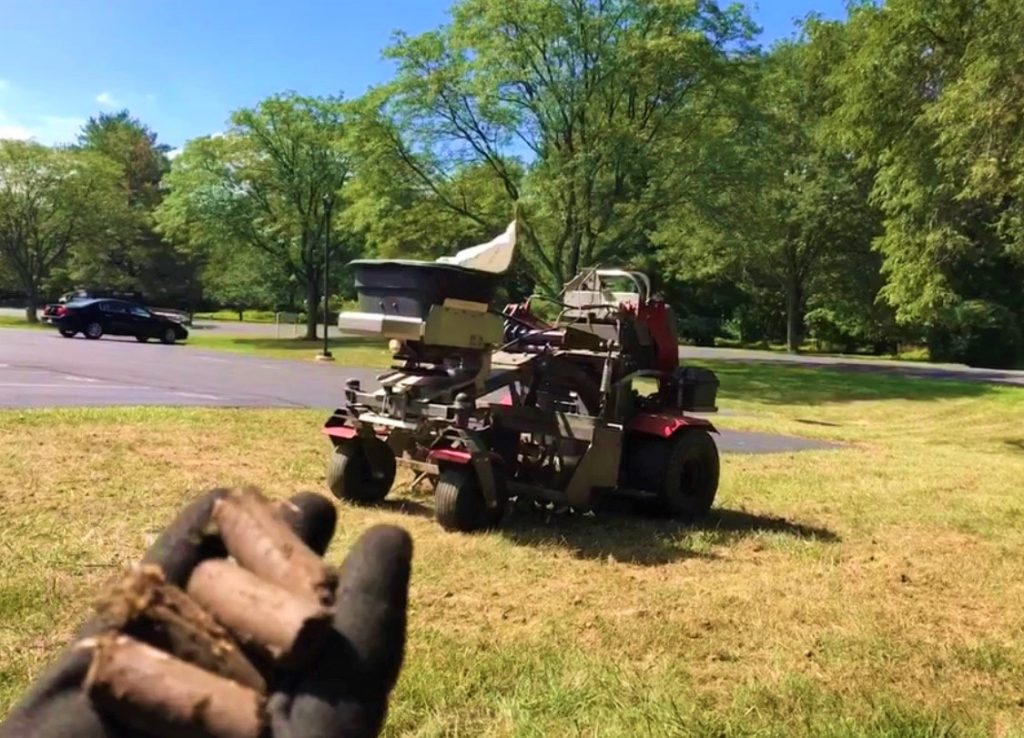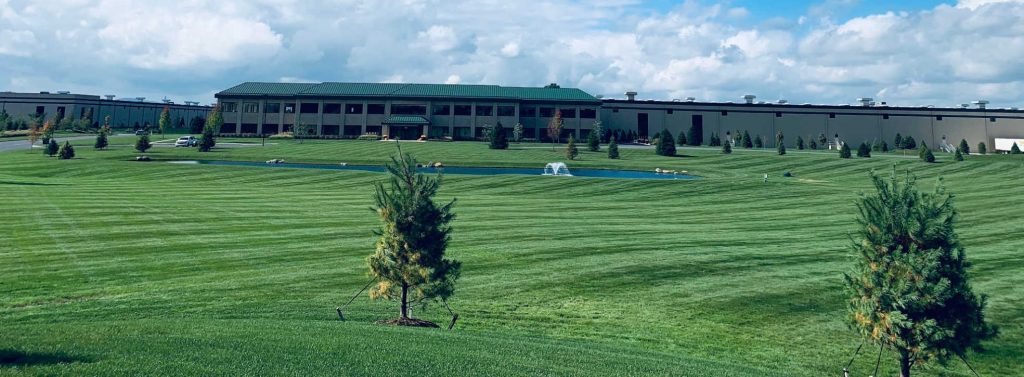Landscape Water Drainage: 5 Ways to Improve Your Water Drainage Woes
Is pooling water creating dangerous ice patches around your parking lot and sidewalks this winter? Have you noticed mildew or an unpleasant musty smell around your commercial property? Then it is time to improve your landscape water drainage system.
Poor landscape drainage issues can really affect your landscape: damaging or killing your grass and plant life, inviting insects and bacteria as well as increasing your chances of slip and fall lawsuits.
It can be quite costly to remedy water damage, from replanting and repaving cracked cement to paying for pest management and reseeding turf.
Improve your landscape’s drainage with these quick fixes:
Landscape Water Drainage Tip 1: Fill all rivets within your landscape and investigate what caused them to form in the first place.
Have you noticed recessed areas within your turf? Not only are these tripping hazards for guests walking on your property and dangerous holes for your riding mower to encounter, but these rivets also accumulate water.
These indentations are caused by a number of factors— poorly directed water flow, wind, excessive foot traffic, compaction from heavy lawn equipment tires, etc.— which causes erosion and invites pools of stagnant water. After winter passes, fill any recessed patches of grass with dirt— and be sure to aerate and reseed, properly.

Water Drainage Tip 2: Change up your landscape design.
When you had your landscape plotted, did the designer account for water drainage? Oftentimes a surprising number of commercial property owners find that they hired landscapers who worked with what they had, not building entirely new structures or drainage systems.
Certain layouts of your landscape may need to be redesigned to prevent run-off water from collecting or flowing into unwanted areas. Some structural ways you can improve your drainage issues are by raising or relocating your garden beds, redirecting water drainage with swales, adding a proper slope to or raising your paved areas, etc.

Drainage Tip 3: Clear your rain gutters and install a rainwater harvesting system beneath your release pipe.
When’s the last time you checked on your rain gutters? If you notice water gushing aggressively out of the bottom of your release pipe, flooding around that area or water spilling out over your top gutters themselves, they may be blocked.
Every few months, your rain gutters can accumulate debris such as leaves, twigs — even bird nests during dry spells — which can block or interfere with the flow of rainfall. We recommend clearing your gutters once a season for the best results, or asking a landscape professional how to redirect your drainage to avoid garden flooding.
Oftentimes, a well-constructed rainwater harvesting system will do the trick. Water collection systems are also a great way to “go green” and reuse water to save on watering costs.
Landscape Water Drainage Tip 4: Add underground piping to redirect water flow.
Some properties are too complex or extensive to make major drainage changes above ground. Drastically sloped areas, for instance, may require underground piping to rechannel water beneath your landscape, far away from your plants and turf.
PVC downspouts can be placed just below the surface to direct water away from your gardens and communal areas. While this level of construction can be a bit of an initial investment, it often dramatically pays off in avoiding future drainage costs.
Drainage Tip 5: Time and measure the disbursement of sprinklers.
Are your drip irrigation systems overwatering your turf and garden beds? Many factors can be at play: certain types of grasses and plants require more water than others, watering needs can vary depending on the time of the year or the amount of rainfall during the particular season, timing can be a huge factor in evaporation, etc.
For instance, the morning hours are usually the best time to water your turf so the moisture can evaporate off your vegetation during the day and not breed fungal growth. Most lawns require one and a half inches of water dosing, and must dry all the way through before a second watering to maintain healthy root systems. Learn more about properly hydrating your landscape here.
The Drainage Help Your Landscape Needs
There are a number of things you can do to redirect water flow, but it’s important to still provide your turf and plant life with the moisture they need to thrive. This balance, however, can be hard to maintain without help.
If your current landscape professionals have not considered any of these drainage tips or you have clear drainage problems, seek a landscaping company that offers the solutions you need, like our team at C. Caramanico & Sons, Inc. Request your commercial property assessment or call us at 610.499.1640 today.

